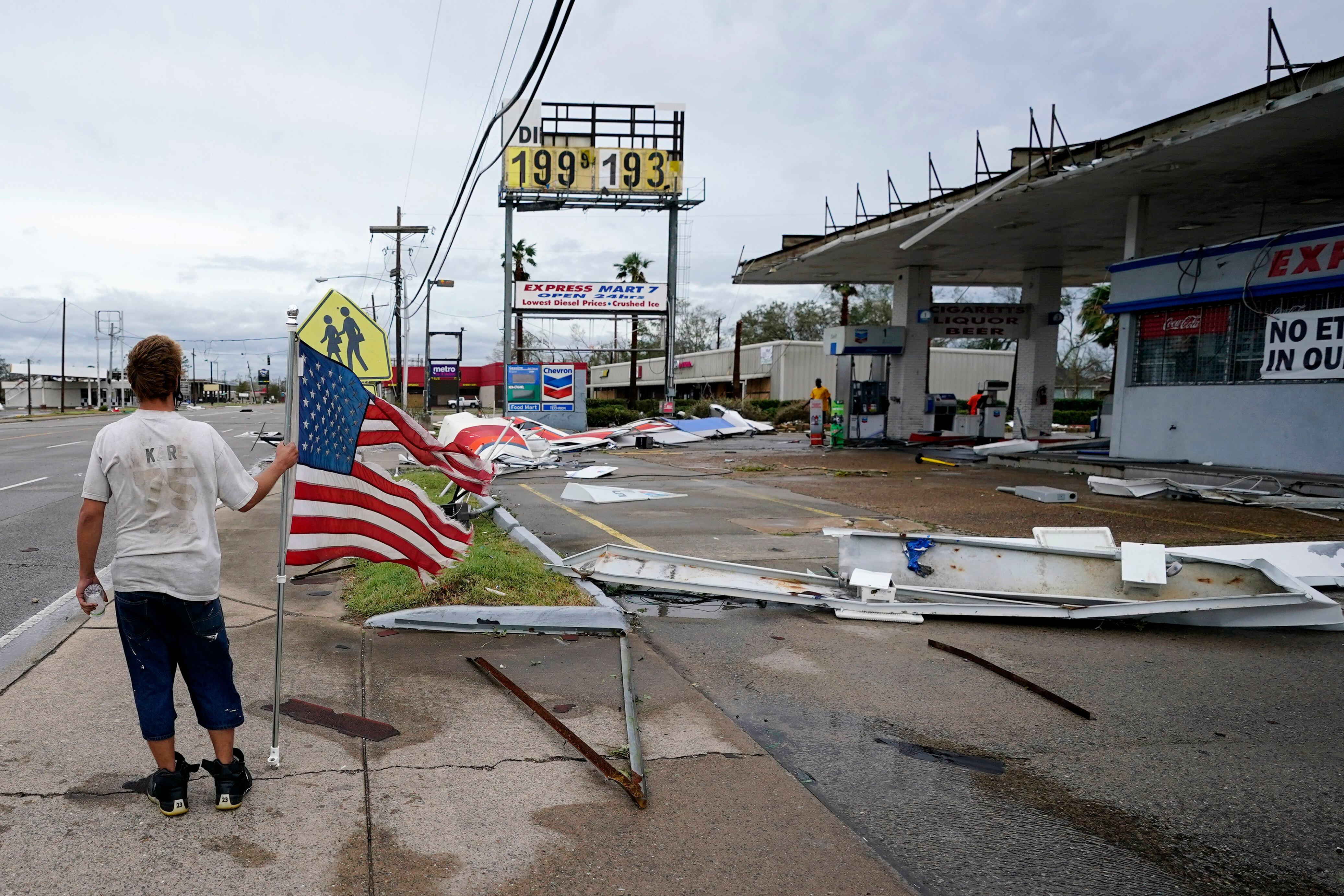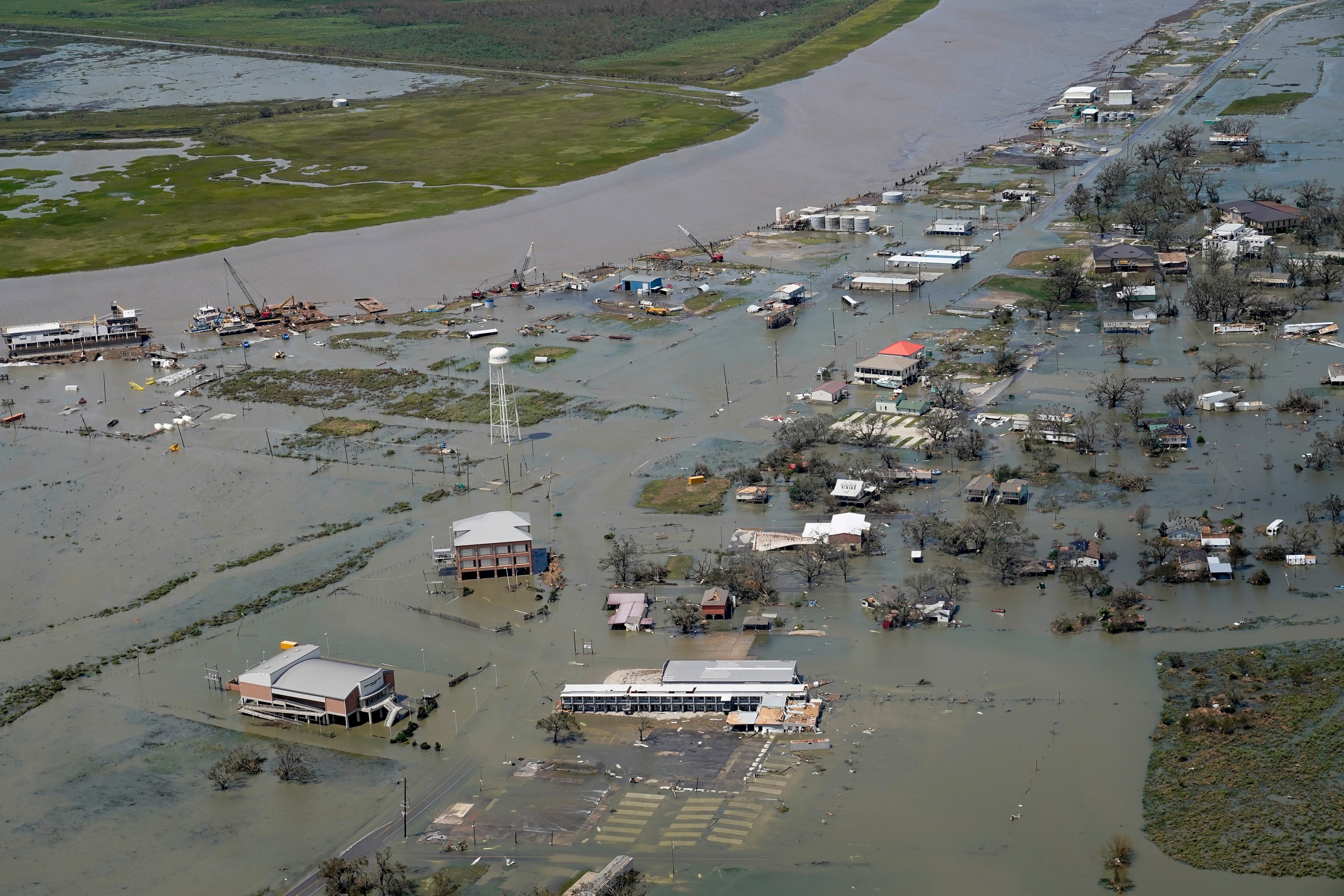By Gerald Herbert, Melinda Deslatte, and Stacey Plaisance
Updated 4:48 pm ET
One of the strongest hurricanes ever to strike the U.S. pounded the Gulf Coast on Thursday, shearing off roofs and killing a least four people, as Laura barreled across Louisiana and maintained ferocious strength while carving a destructive path hundreds of miles inland.
A full assessment of the damage wrought by the Category 4 system was likely to take days. But initial reports offered hope that Laura, despite leaving entire neighborhoods in ruins and more than 875,000 people without power, was not the annihilating menace that forecasters had feared.
"It is clear that we did not sustain and suffer the absolute, catastrophic damage that we thought was likely," Louisiana Gov. John Bel Edwards said. "But we have sustained a tremendous amount of damage," he said.
He called it the most powerful hurricane to strike Louisiana, meaning it surpassed even Katrina, which was a Category 3 storm when it hit in 2005.
The hurricane's top wind speed of 150 mph (241 kph) put it among the most powerful systems on record in the U.S. Not until 11 hours after landfall did Laura finally weaken into a tropical storm as it plowed north and thrashed Arkansas with powerful winds and heavy rain.

The storm came ashore in low-lying Louisiana and clobbered Lake Charles, an industrial and casino city of 80,000 people. On Broad Street, many buildings had partially collapsed, and those didn't were missing chunks. Windows were blown out, awnings ripped away and trees split in half in eerily misshapen ways. Police spotted a floating casino that came unmoored and hit a bridge.
"It looks like 1,000 tornadoes went through here. It's just destruction everywhere," said Brett Geymann, who rode out the storm with three family members in Moss Bluff, near Lake Charles. He described Laura passing over his house with the roar of a jet engine around 2 a.m.
"There are houses that are totally gone. They were there yesterday, but now gone," he said.
Not long after daybreak offered the first glimpse of the destruction, a massive plume of smoke visible for miles began rising from a chemical plant. Police said the leak was at a facility run by Biolab, which manufactures chemicals used in household cleaners such as Comet bleach scrub and chlorine powder for pools.
Nearby residents were told to close their doors and windows and turn off air conditioners.
The fatalities included a 14-year-old girl and a 68-year-old man died when trees fell on their homes in Louisiana, authorities said. No deaths had been confirmed in Texas, which Republican Gov. Greg Abbott said would amount to "a miracle." President Donald Trump said he would visit the Gulf Coast this weekend to tour the damage.
More than 580,000 coastal residents were ordered to join the largest evacuation since the pandemic began and many did, filling hotels and sleeping in cars. Although not everyone fled from the coast, officials credited those who did leave for minimizing the loss of life.

More than 700,000 homes and businesses remained without power in Texas and Louisiana, according to the website PowerOutage.Us, which tracks utility reports.
Forecasters had warned that the storm surge of 15 to 20 feet would be "unsurvivable" and could push 40 miles inland. Edwards said the storm surge wound up being measured in the range of 9 feet to 12 feet — still bad, but far from the worst forecast. He was hopeful that damaged homes could quickly be made habitable.
The priority, Edwards said, was search and rescue, followed by efforts to find hotel or motel rooms for those their homes. Officials in Texas and Louisiana have both sought to avoid traditional mass shelters for evacuees over fears of spreading COVID-19, and Edwards was concerned that the storm would inhibit coronavirus testing at a time when schools and universities are reopening.
Bucky Millet, 78, of Lake Arthur, Louisiana, considered evacuating but decided to ride out the storm with family due to concerns about the coronavirus. He said a small tornado blew the cover off the bed of his pickup and made him think the roof on his house was next.
"You'd hear a crack and a boom and everything shaking," he said.
The storm was so powerful that it could regain strength after turning east and reaching the Atlantic Ocean, potentially threatening the densely populated Northeast.

Laura hit the U.S. after killing nearly two dozen people on the island of Hispaniola, including 20 in Haiti and three in the Dominican Republic, where it knocked out power and caused intense flooding.
It was the seventh named storm to strike the U.S. this year, setting a new record for U.S. landfalls by the end of August. The old record was six in 1886 and 1916, according to Colorado State University hurricane researcher Phil Klotzbach.
Laura was tied with five other storms for the fifth-most powerful U.S. hurricane, behind the 1935's Labor Day storm, 1969's Camille, 1992's Andrew and 2004's Charley, Klotzbach said.
___
Deslatte reported from Baton Rouge, Louisiana, and Plaisance from Stephensville, Louisiana. Associated Press contributors include Jeff Martin in Marietta, Georgia; John L. Mone in Port Arthur, Texas; Paul J. Weber in Austin, Texas; Seth Borenstein in Kensington, Maryland; Juan A. Lozano in Houston; Jake Bleiberg in Dallas; Jay Reeves in Birmingham, Alabama; Jill Bleed in Little Rock, Arkansas; and Sophia Tulp in Atlanta.









